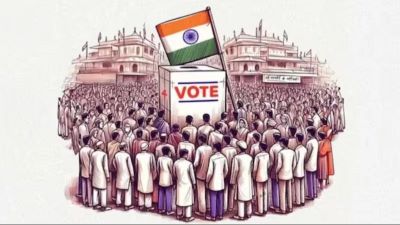Context
In the pulsating realm of Indian politics, the role of star campaigners is as pivotal as it is contentious. These high-profile figures, often luminaries within their respective parties, traverse the electoral landscape, wielding influence and resources to sway voters' sentiments. However, their activities are not without regulation, as delineated by the Representation of the People Act, 1951 (RP Act). This legislative cornerstone establishes the parameters within which these star campaigners operate, dictating their permissible expenditures and delineating the mechanisms for oversight and accountability.
Legal Provisions Governing Star Campaigners
Embedded within Section 77 of the RP Act, the framework surrounding star campaigners delineates the contours of permissible expenses incurred by these political luminaries. Designated by their parties, star campaigners, whether top-tier leaders or celebrity endorsers, assume a pivotal role in the electoral machinery. However, their appointment is not without constraint, with recognized parties limited to a maximum of 40 star campaigners, while unregistered entities can enlist up to 20. Moreover, stringent timelines dictate the submission of these names to the Election Commission and Chief Electoral Officer, ensuring transparency and procedural adherence.
The benefits accruing to these star campaigners are intricately tied to the provisions outlined within the RP Act. Notably, their campaign-related travel expenses, whether by air or alternative means, are exempt from contributing to individual candidates' expenditure caps. This exemption, while ostensibly facilitating broader outreach efforts, underscores the nuanced interplay between party politics and electoral finances. Yet, a caveat exists: should a star campaigner directly solicit votes for a candidate or share a platform with them, the attendant expenses become attributable to the candidate's election ledger, thus circumventing the exemption clause.
Challenges and Regulatory Imperatives
Amidst the frenetic pace of electioneering, the Election Commission has issued advisories aimed at tempering the combative rhetoric often espoused by star campaigners. Emphasizing the imperative of issue-based discourse, these directives seek to elevate the electoral discourse beyond partisan bickering. However, despite such interventions, instances of vitriolic language and inflammatory rhetoric persist, underscoring the enduring challenge of maintaining decorum amidst political contestation.
The judiciary, too, has waded into this quagmire, adjudicating on the limits of regulatory authority vis-à-vis star campaigners. In a landmark ruling in January 2020, the Supreme Court intervened to overturn the Election Commission's decision to revoke the star campaigner status of a Congress leader, highlighting the delicate balance between institutional prerogatives and judicial oversight. However, this judicial activism has not resolved the perennial issue of underreporting campaign expenses, a systemic flaw that undermines the integrity of the electoral process.
Reform Imperatives and the Road Ahead
The confluence of legal lacunae and regulatory challenges necessitates a recalibration of existing frameworks governing star campaigners. Empowering the Election Commission with the authority to rescind star campaigner status in cases of egregious misconduct represents a pragmatic step towards enhancing electoral accountability. By tethering campaign expenditure relief to adherence to the Model Code of Conduct, this proposal imbues the electoral process with greater transparency and probity.
Furthermore, the exigency of fortifying expenditure assessment mechanisms looms large on the electoral horizon. The adoption of robust methodologies for evaluating rally and meeting expenses, reflective of prevailing market rates, is imperative to curb the pervasive phenomenon of underreporting. Such measures, while ostensibly bureaucratic, are indispensable in safeguarding the sanctity of India's democratic ethos.
Conclusion
The saga of star campaigners within India's electoral tapestry is one replete with intrigue and complexity. As standard-bearers for their respective parties, these luminaries straddle the fine line between political expediency and ethical imperatives. However, the regulatory landscape governing their activities remains fraught with challenges, necessitating concerted efforts to fortify oversight mechanisms and imbue the electoral process with greater transparency. Through judicious reforms and institutional fortification, India can navigate the labyrinthine terrain of electoral politics, ensuring that the voice of the electorate resonates with clarity and conviction.
|
Probable Questions for UPSC Mains Exam
|
Source – The Hindu







